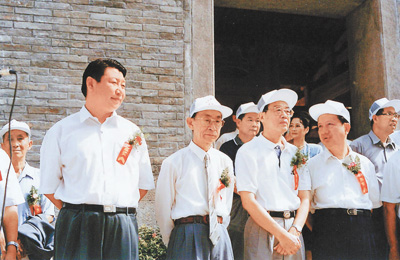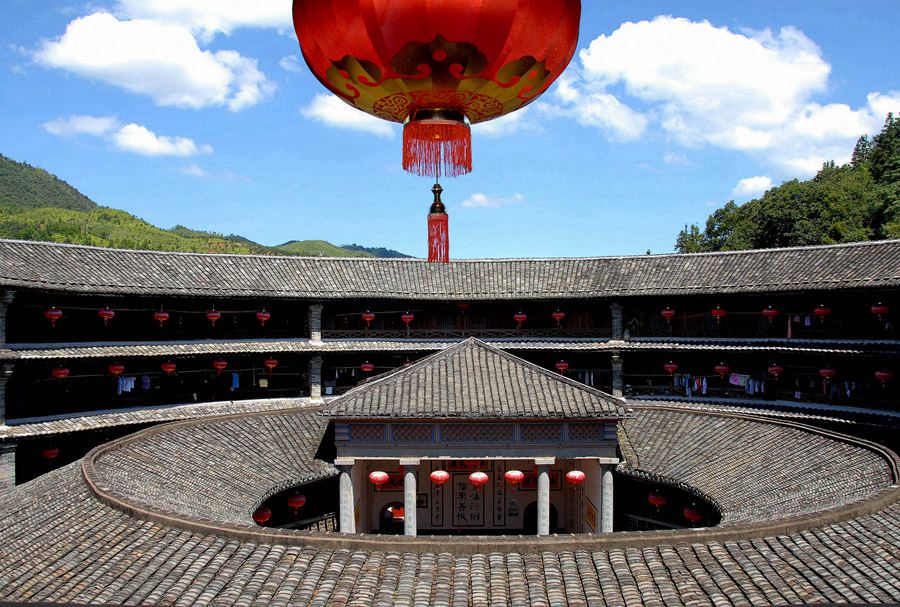In 1998, Yongding county of Longyan city and Nanjing county of Zhangzhou city, both in Southeast China's Fujian Province, initiated UNESCO World Cultural Heritage applications for their earthen buildings, or tulou. Later Hua'an, another county of Zhangzhou, joined the application team.
Longyan and Zhangzhou disagreed on the correct label for the earthen houses: Hakka or Minnan tulou.

The most densely arranged tulou group in Fujian is the Hekeng tulou group in Nanjing County, Zhangzhou City. (Photo: People.cn)
According to the scholar Wang Yifu, then vice governor of Fujian Province, some officials and experts at that time believed it was no easy feat for these rural dwellings to make a combined application for UNESCO World Cultural Heritage status as neither label ‒ Hakka or Minnan ‒ completely embodied the earthen building culture of Fujian.
Picking the correct name for the buildings affected their future identities and so generated endless arguments.

On June 30, 1997, Xi attends the completion ceremony of the restoration of Lin Zexu's birthplace, former residence and memorial hall in Fujian Province. (File photo)
Hearing of the arguments, Xi Jinping, then governor of Fujian, presided over an office meeting on April 30, 2000, to discuss the application for UNESCO World Heritage status.
Pan Xincheng, then deputy governor, recalled that Xi said that there were earthen buildings everywhere in Fujian and since all of them would be relevant to the world heritage application, they should call them "Fujian tulou,”and then all of Fujian would have a stake.
"Everyone felt that Xi had a valid point and seeing the big picture, they agreed," he said.
At the meeting they outlined that the earthen buildings were located in Xiandu town of Hua'an county, Hukeng, Xiayang and Gaotou towns of Yongding county, and Shuyang and Meilin villages of Nanjing county. A group was set up to take charge of the UNESCO World Cultural Heritage application project.

During March 22 to 25, 2021, Xi inspects Fujian Province. (Photo: Xinhua)
Later the provincial government designated 46 earthen houses in Yongding, Nanjing and Hua'an counties as "Fujian tulou" for inclusion in the World Heritage List application.
With the name dispute settled, Longyan and Zhangzhou authorities worked together to promote the protection of earthen buildings and environmental preservation, putting the application project on a fast track.

The internal view of Fujian tulou. (Photo: People.cn)
On July 7, 2008, "Fujian tulou" was officially added to UNESCO's World Natural Heritage list at the 32nd session of the World Heritage Committee in Quebec, Canada, becoming Fujian's second and China's 36th site inscribed on the list.
"The tulou as a whole and the nominated Fujian tulou in particular, in terms of their form, are a unique reflection of communal living and defensive needs, and in terms of their harmonious relationship with their environment, an outstanding example of human settlement," reads the official description of the World Heritage Convention.
(Translated by Luo Tianya, edited by Sun Tianren; Original story from Fujian Daily)


